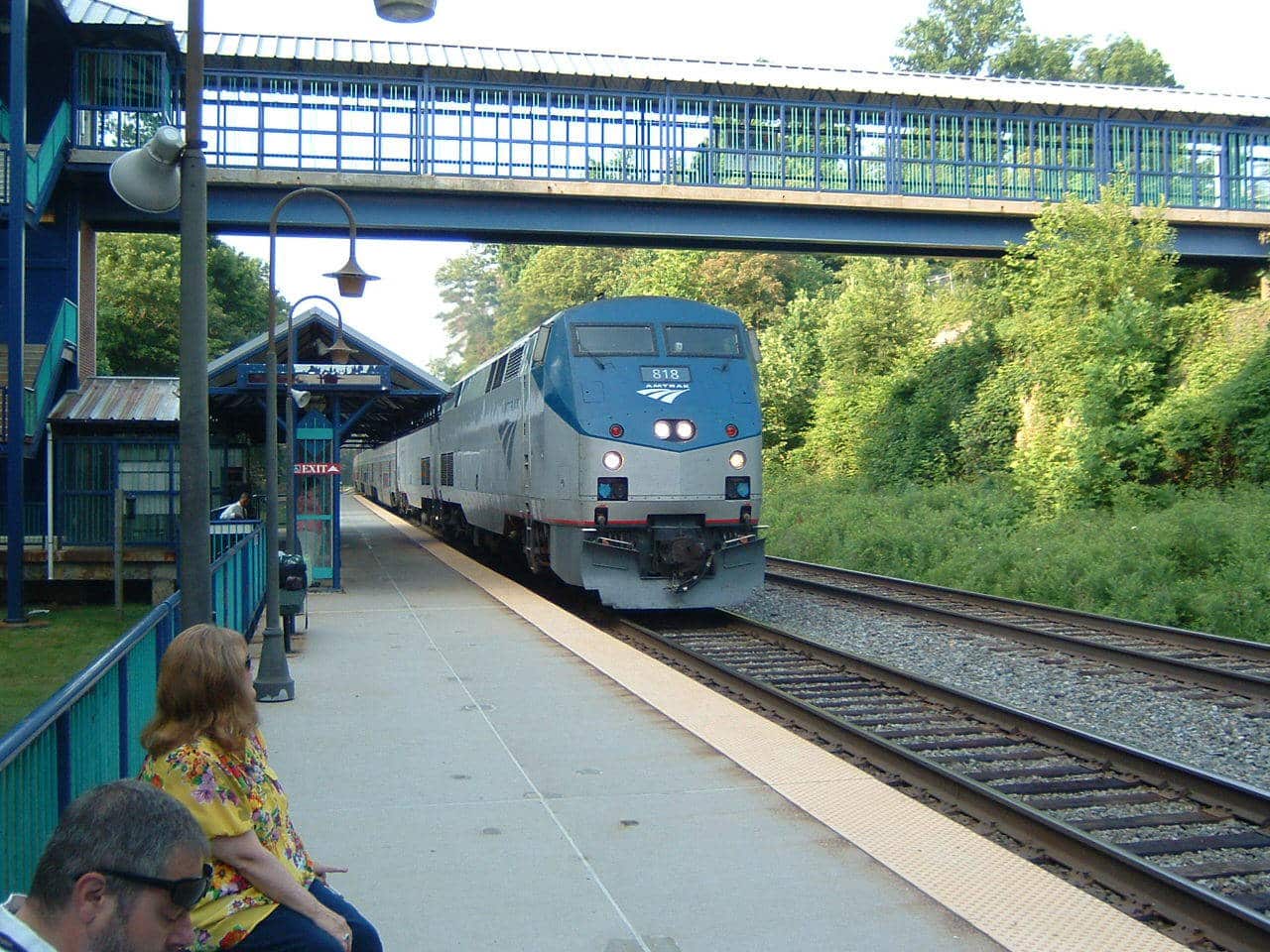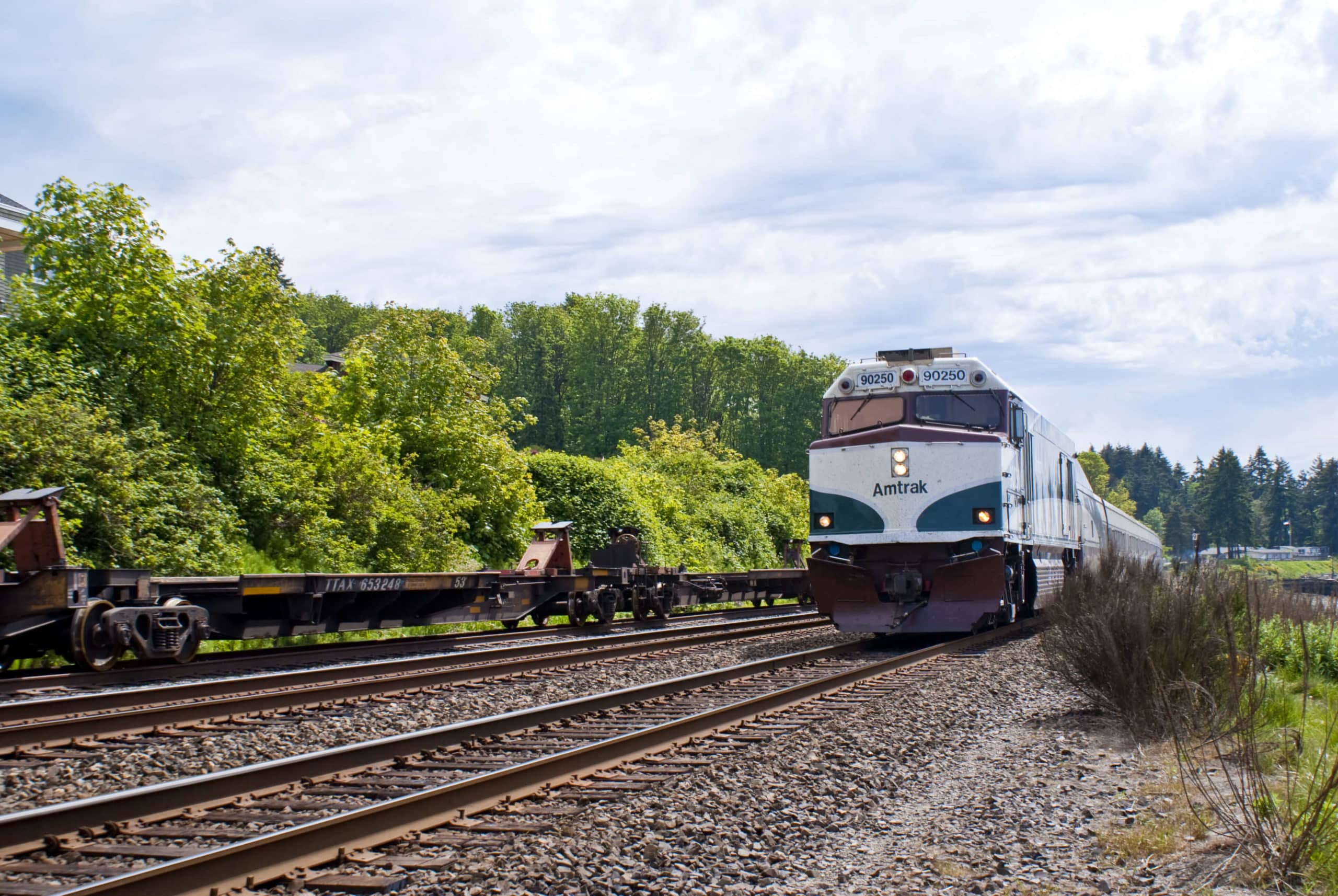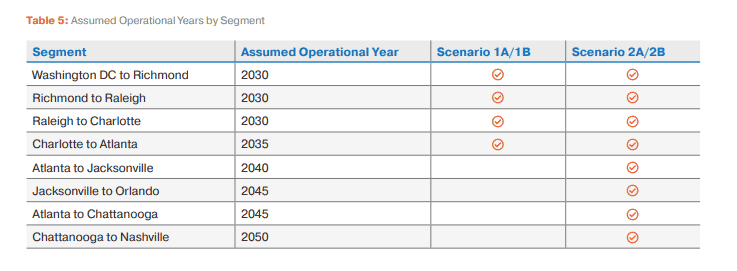- September 30, 2021
- Perspectives
Understand Benefit Cost Analysis and How to Position Your Rail Project for Funding


Ben Chambers, AICP
Transportation Planner

Emily Grenzke, MIAM
Transit Asset Management Specialist

Aaron Kozuki
Transit Asset Management Specialist

Kevin Tilbury, AICP
Senior Transportation Planner
For the past 60 years, Americans have generally relied on highways and airports to travel between regions. However, with increasing travel time delays and reliability issues stemming from congestion on roadways and at airports, as well as an increasing awareness of the impact of vehicle and airplane emissions on the environment, communities and regions are looking to leverage the intercity passenger rail network to increase their mobility choices. Passenger rail can play an increasingly important role in America’s transportation network by providing high quality, high-performing rail service between city pairs that are 300-600 miles apart. Benefits include enhanced mobility options between metropolitan areas as well as connecting rural areas to essential services and job opportunities, relieving congestion on highways and at airports, reducing carbon emissions, avoiding costly accidents, reducing injuries and fatalities, and increasing service to underserved populations. With significant funding on the horizon, and Amtrak’s 15-year vision in development, communities and regions will benefit from increased focus on passenger rail service.
A Renewed Interest in Intercity Passenger Rail Travel
The Biden administration has indicated strong support for investing in the intercity passenger rail network and has facilitated negotiations in congress to develop an infrastructure bill that would fund improvements to passenger rail service. The Infrastructure Investment and Jobs Act recently passed by the United States Senate provides $102.1 billion for passenger and freight rail over the next five years, a 561% increase over

current funding levels. In anticipation of the infrastructure bill, Amtrak has developed its 15-year vision of intercity rail expansion through its Amtrak Connects US plan. This vision adds 39 new routes to Amtrak’s existing network, enhances 25 existing routes, and adds service to 160 new communities.
The prospect of significant funding coupled with Amtrak’s Connect US vision, presents a once-in-a-generation opportunity for communities and regions to benefit from enhanced passenger rail service. As roughly 60% of the funding provided in the Senate bill comes from competitive grants, communities and regions need to be able to articulate why their passenger rail projects should be prioritized, funded, and constructed.
Benefit Cost Analysis: Demonstrating the Value of Infrastructure Investment
A well-prepared community or region can demonstrate the value of investment in modern passenger rail systems. Rail’s value proposition is established through Benefit Cost Analysis (BCA), which the US Department of Transportation defines as “a systematic process for identifying, quantifying, and comparing expected benefits and costs of a potential infrastructure project.”
BCAs are the metric of choice because they level the playing field through, objective and transparent data that enables apples-to-apples comparisons between projects that may vary greatly in scale, scope, and context. How do you compare a bridge project in Peoria with an interstate replacement project in Los Angeles? A thoughtful and methodologically sound BCA can effectively position a community to be a successful federal grant awardee.
More often than not, federal discretionary grant programs make BCAs mandatory to better manage an increasingly competitive grant landscape. For example, USDOT’s Rebuilding American Infrastructure with Sustainability and Equity (RAISE) grant program (formerly known as BUILD and TIGER), the country’s largest discretionary grant program for transportation infrastructure, received almost 10,000 applications in 2020.
BCAs are eminently useful metrics for evaluating grant applications, but they come with notable challenges. A comprehensive, methodologically-sound BCA can consume hundreds and even thousands of hours to develop the necessary data, time, and resources that many communities simply do not have.
Fear not! While BCAs may appear to be a significant barrier to pursuing major infrastructure projects, they can also represent an opportunity for communities to get creative and innovative. USDOT acknowledges disparities in resources among grant applicants by allowing for flexibility in its BCA guidance, Kimley-Horn’s recent work on the Southeast Economic Benefits Study is a prime example of our benefits analysis services and ability to position clients well for grant funding.
Southeast Corridor Economic Benefits Study: A Creative Approach to Data
We recently completed an analysis of the economic benefits of high-performance rail for the Southeast Corridor Commission (Commission) a consortium of state and federal partners representing the Federal Railroad Administration (FRA) and the DOTs of Virginia, North Carolina, South Carolina, Georgia, Florida, Tennessee and the District of Columbia. Developing benefits for such a large system at different stages of development meant utilizing existing DOT plans and the Southeast Regional Rail Plan (Rail Plan) a 40-year vision for intercity passenger rail transportation linking major centers in the Southeast with each other and other places throughout the U.S.
Leveraging a trove of data and analysis from readily available sources, the study team developed an insightful analysis that allowed the Commission to effectively compare the relative economic benefits of conceptual corridors identified in the Rail Plan. For example, a well-documented benefit of high-performing intercity passenger rail is the increase in development potential at surrounding stations. Previous studies have shown improvements in property values ranging from 5-42 percent for commercial properties, and 3-40 percent for residential properties.
Using easily accessible, curated parcel-level data from cloud-based urban planning platform UrbanFootprint, as seen below, we efficiently acquired data for existing land use, property values, and employment for more than 60 potential station locations. The team used this data, along with assumptions about future density and floor area ratio (FAR), to estimate the development potential around each station area. The study estimates between $2.6 and $3.8 billion in property value increases and between 28,000 and 76,600 new regional base jobs associated with new high-performing rail stations.
Other benefits and economic impacts include travel time savings, increased economic output, decreased emissions and accident costs, improved freight movement, and job creation.
Parcel-level data from UrbanFootprint is used to estimate development potential around proposed station areas.
Additional Considerations
Another consideration is the impact of high-performing intercity passenger rail projects on freight rail operations. The potential for improved functionality of freight can be defined within the context of the states and regions served by enhanced rail routes. In coastal areas, freight service along new rail corridors can provide resilience to tropical storms and flooding. In these areas an alternate corridor for freight movement during emergencies can impact existing freight lines and mitigate the costs of delays. When freight and passenger services are currently using the same tracks, the cost of delays is not typically weather-related, but rather is a result of heavy traffic and congestion. Improvements that can reduce congestion through better scheduling and dispatching and/or making capacity improvements to separate freight and passenger travel, such as those proposed under the Transforming Rail in Virginia program, should reduce this congestion. Instead of focusing on resiliency in these areas, our analysis of impacts on freight in the Southeast Rail Corridor focuses on potential reductions in freight delay and associated savings.
Rather than assume that high-performance rail would be completed in its entirety simultaneously, the economic benefits analysis considers the phased construction of each segment. The phasing of corridor improvements means that economic benefits will accrue over a different number of years for each area, which is more realistic than assuming that all infrastructure improvements are available at once in a single horizon year. A segment phasing plan was developed through consultation with precedent studies and participating agencies.
A segment phasing plan provides a more realistic assessment of benefit accrual over time as opposed to a single horizon year.
The full economic benefits analysis for the Southeast Corridor can be found here. This work was completed using existing data and analysis, and Kimley-Horn can translate the approach and methodology to any region in the U.S.
Do you want to learn more about how your community or region can benefit from an enhanced focus on passenger rail? We can help you demonstrate the value of infrastructure investment through BCA.
About the Authors

Ben Chambers, AICP
Ben is a transportation planner with experience in transit operations and transportation infrastructure development. He has worked in the public and private sectors in the Washington, DC, Atlanta, GA, and Charlottesville, VA, metro areas to evaluate transportation alternatives that balance environmental, land use, urban and economic development, and transportation decisions. His professional interests are particularly focused on pedestrian and bicycle solutions to first-/last-mile connectivity issues facing transit systems.

Emily Grenzke, MIAM
Emily is a project manager and analyst with over 20 years of consulting and research experience across several domains, including a focus during the past 14 years on public transportation. She also managed the introduction and implementation of a risk management framework, strategic and business planning processes, sustainability strategy, and environmental management system for the largest freight railway in Australia.

Aaron Kozuki
Aaron has more than 16 years of experience in the areas of transit asset management, activity-based cost financial modeling, financial planning, management analysis, and regional/statewide transportation planning. He develops activity-based operations and maintenance cost models; cost allocation tools for policy evaluation; tools to analyze capital planning programs and maintain infrastructure assets in a state of good repair (SGR); short- and long-range capital programs under funding constraints; and applies cost allocation and management allocation tools to determine a basis for pricing services.

Kevin Tilbury, AICP
Kevin has more than 24 years of experience in multimodal transportation and land use planning for government agency partners at the local, regional, and state levels. He excels at communicating complex data and analysis to technical and non-technical stakeholder audiences. His work includes major corridor studies, sub-area studies, and regional transportation plans.



